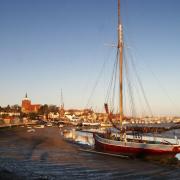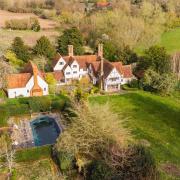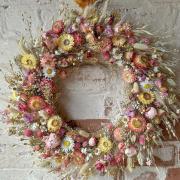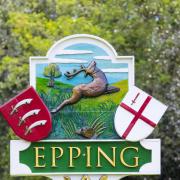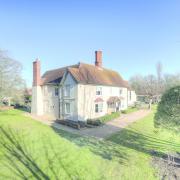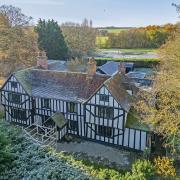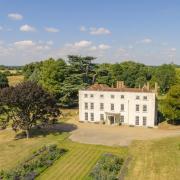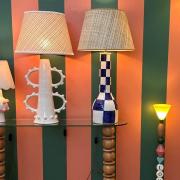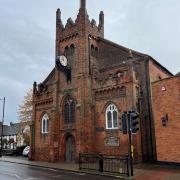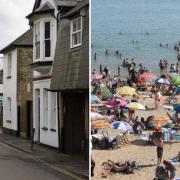In the first of a new series for Essex Life, Sybilla Hart goes behind the scenes of some of the county’s most distinguished buildings to discover the secret histories they hold

One of the fascinating aspects of the former Tudor merchant’s house, Paycocke’s in Coggeshall, is that there are only two families who played a pivotal role in its history. Although many distinguished guests, including composer Gustav Holst, have lived at Paycocke’s over these 500-odd years, it is only the Paycocke and Buxton family histories that are closely intertwined with this beautiful, timber-framed house located close to the River Blackwater on West Street.
The Paycocke family died out at the end of the 16th century and the house was then bought by the Buxton family. Charles Buxton sold Paycocke’s to a tenant in the 18th century, but all was not lost as the MP Lord Noel-Buxton, a relation of the Buxton family, bought the house back and restored it before gifting it to the National Trust in the 1920s.
The Paycocke family came from Suffolk, where they owned a lot of property, before they came to settle in Coggeshall. John Paycocke died in 1505, leaving the site of Paycocke’s to his son, Thomas.
The building

Thomas commissioned the building we see today, paid for by his success as a wool merchant. Thomas built the ornate and impressive house in two stages in the early 16th century. Originally, in 1420, Paycocke’s formed part of an open medieval hall but the house Thomas built consisted of five bays and a host of smaller rooms, which led to each other rather than a typical hall-style house. This was fashionable on the continent and Thomas may have been inspired by the travels he would have made for work.
Thomas had profited enormously from outsourcing the weaving of the wool to the weavers and fullers of the town, known as the ‘outwork system’. This system would have meant that the manufacture of the wool was done offsite, freeing up Paycocke’s as a place to entertain and impress clients. The white broadcloth produced in the town was sometimes known as Coggeshall White.
Not only was Thomas wealthy but his soon-to-be wife, Margaret Harrold, also came from a rich family. Their initials are carved into the wooden beams of Paycocke’s and they can still be seen to this day. It was quite an unusual step for a man in those days to honour his wife so publicly.
Thomas acted as godparent for many children in the parish and was known as a deeply religious and charitably minded man. He was a member of the Crutched Friars in Colchester and left money to religious orders in his will.
Margaret died before producing an heir and Thomas remarried a lady called Ann Cotton with whom he had a baby daughter. Because she was a girl, Thomas’ daughter could not inherit the house on her father’s death in 1518, so Paycocke’s passed on to Thomas’ nephew. Thomas did not know that this would come to pass because his wife, Ann, was with child when he passed away. He provided for his family nevertheless and his daughter, Anne, went on to have eight children and was married three times. Her daughter, Anne, ended up living in Abbey House in Malmesbury.
The house passed to John Paycocke, the last male heir, who died in 1548, and the Buxton family then bought the house.
The Buxtons
The Buxtons came from Sudbury and were also cloth merchants. Born in 1672, Isaac Buxton had six children and was also a deeply religious man, although he was a staunch non-conformist. Various sons of Isaac lived in the house, but his son, Charles, an oil merchant who eventually inherited the house, chose to reside in London, renting Paycocke’s to a man named Roger Ludgater. Roger later bought the house off the family in 1746.
Paycocke’s was divided into three cottages and eventually fell into a pitiful state of disrepair in the late 1800s. Thankfully, a relation of the Buxton family, Lord Noel-Buxton, bought Paycocke’s back in 1910 and restored it to the current splendour that we visitors can pay witness to today.
Restoration
It took Lord Noel-Buxton 20 years to restore Paycocke’s but he was committed to doing so. He commissioned the Buxton family crest over the fireplace and the glass window in the garden room. He added two carved figures, which still fool people into believing their provenance to be much earlier, and opened up views of the garden from the house by getting rid of old outbuildings.
It is extraordinary to think that the last National Trust tenants only left in 2008. The charity set about busily restoring the gardens in the Arts and Crafts style adopted by Lord Noel-Buxton. Thomas Paycocke originally used the one-acre gardens as an industrial yard in the 16th century but the gardens are much more of a feature today.
Conrad and Miriam Noel, cousins of Lord Noel-Buxton, lived at Paycocke’s in exchange for overseeing the restoration. They were among the many people who lived and fell in love with Paycocke’s charms. Miriam was a keen gardener and it was she who was to coax the gardens back to life in the Arts and Crafts style. The current volunteer gardening team at Paycocke’s have set about planting the types of flowers that would have been grown in Thomas’ day, as well as medieval dye plants, historic roses and Edwardian fuchsias.
The National Trust gardening team uncovered and restored an original herringbone brick path, dovecote, writer’s shelter and vegetable garden designed by Miriam. Let’s hope that this beautiful house and garden will be able to welcome members of the public back to discover it for themselves very soon.
25 West Street, Coggeshall, Colchester, Essex CO6 1NS; nationaltrust.org.uk/paycockes




